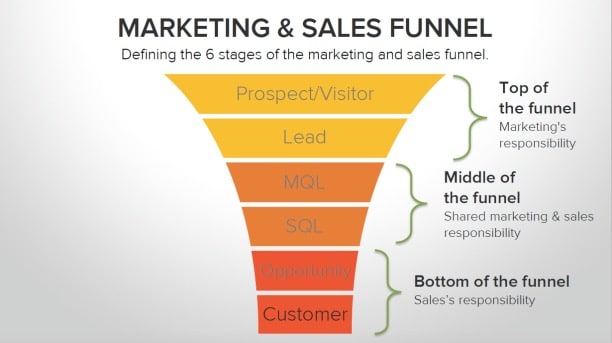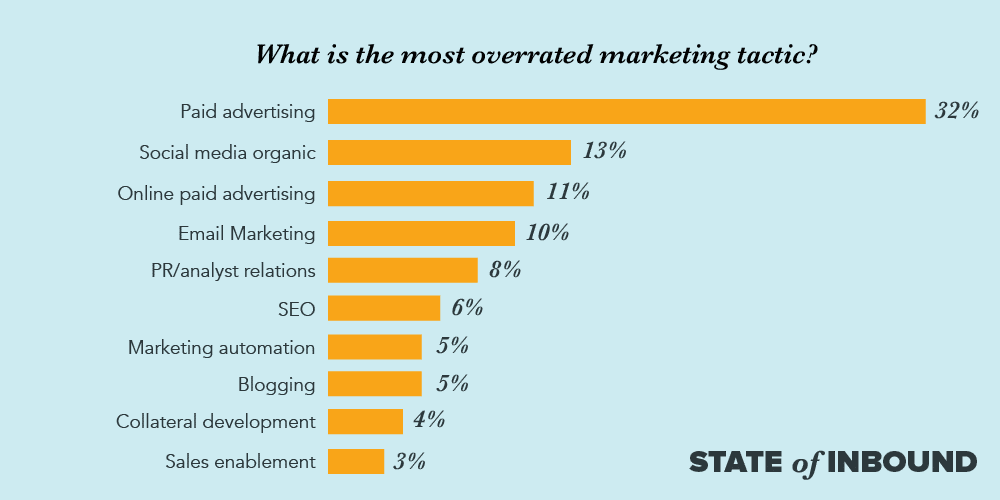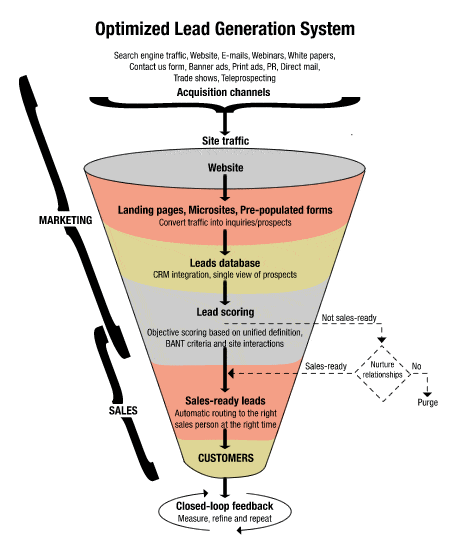The Best B2B Lead Generation Strategies (Updated for 2023)

Cracking the B2B Lead Generation Conundrum
B2B lead generation is becoming increasingly difficult; a common story I hear from B2B marketers is that it’s becoming increasingly more challenging to drive lead generation at the needed quality and scale to support their sales teams targets. The very fact that this is a consistent theme one would assume that there is plenty of information online about how to generate leads for your business efficiently. While there has been much research and there are articles that suggest various ways to generate leads, most of the strategies offered are incredibly traditional, overused and increasingly expensive and ineffective. It’s also important to keep in mind that, although lead generation is crucial for any business, the strategies used to generate leads vary depending on the type of business. For example, B2C companies typically use different lead generation strategies that B2B companies just couldn’t use because the end goal is different and the nature of the business relationship is different. The right place to start is by defining a lead. After determining B2B leads, this article will go on to discuss some of the most effective B2B marketing strategies, followed by plans for how to better align sales and marketing, as well as why a partnership between the two is crucial for the success of your company.
Read on to learn how to grow your business and generate high-quality leads.

How to define B2B Leads
Before one can understand the best B2B lead generation strategies, it’s imperative that they first differentiate between different types of B2B leads. A helpful way to define B2B leads is to identify where they’re at in the lifecycle stage. There are a number of different models and templates available. One we’re particularly fond at Gripped Towers is the Inbound lifecycle model used mainly by Hubspot which defines the following stages:
- Subscriber
- Lead
- Market Qualified Lead
- Sales Qualified Lead
- Opportunity
We like this model because firstly, it provides a structure that matches to a clear funnel methodology and secondly that funnel allows you to easily map sales and marketing roles and responsibilities to each stage much more easily. By segmenting your B2B contacts based on their position in the lifecycle stage, you can target each type of lead with information most relevant to them, as well as improve the efficiency of your marketing activity.
{{cta(‘e87cbf33-18c9-4502-ac37-32637ccf6ae8’)}}
For example, if you notice that many of your subscribers haven’t passed onto the lead stage of the lifecycle stage, you can quickly identify that you have a problem with your initial marketing activities. Segmenting your contacts into the lifecycle stages makes it easy for you to build consensus and understanding between your sales and marketing teams, it allows everyone to understand the role they play in moving prospects through the funnel.
 Source: Snap App https://www.snapapp.com/blog/lead-generation-funnel
Source: Snap App https://www.snapapp.com/blog/lead-generation-funnel
Subscriber:
A subscriber is a contact who has consented to be contacted by your business occasionally. Subscribers have typically only registered to your newsletter or blog, so while they are exposed to your business, they may not have received enough personalised or relevant information to turn them into leads. The best way to create a long-term relationship with subscribers is to help move them through the lifecycle by providing them with the most relevant content.
Lead:
A lead began as a subscriber but has shown more interest in your company. To qualify as a lead, a contact must have provided your business with personal information in exchange for something, most likely content like ebooks or whitepapers. Typically, these contacts fill out forms with more information than a simple email address in response to content-based website offers. The first two stages of the funnel are owned by marketing, they should be the largest (in volume) number of your contact database.
Market Qualified Lead (MQL):
MQLs are individuals who have shown a desire for a higher level of engagement that leads to the previous stage. They have typically shown much more interest in a potential sales conversation, demonstrated by following through with calls to action (CTAs) like buying guides. Promoting a lead to an MQL should only be done when a lead shows this level of interest followed by action.
Sales Qualified Lead (SQL):
SQLs are leads that have been personally contacted by your sales team as qualified for direct sales follow up. Sales and marketing teams should work together to pick only high-quality SQLs so that the sales team is not overwhelmed by the amount of SQLs that require additional direct communication.
Opportunity:
Opportunities are contacts who have graduated from being SQLs and are now real sales opportunities. They are in the pipeline and likely have typical Budget, Authority, Need, Timescale (BANT) qualification. An Opportunity is at the last stage before becoming a paying customer – or in other words, everybody’s favourite type of lead.
What B2B lead generation tactics work?
Let’s not beat around the bush; lead generation is the essential aspect of your B2B go-to-market plan. If your business is generating little in the way of inbound demand, what impact is that having on your sales performance? Or revenue targets?
 Source: Hubspot State of Inbound 2017
Source: Hubspot State of Inbound 2017A simple google search for “how to get B2B leads” can produce all sorts of tedious, conventional marketing tips. However, when asking which B2B lead generation strategies work it’s important to remember this: no one really knows. What I mean by this is that B2B marketing is complex and multifaceted. It involves a delicate combination of marketing strategies like PPC, blogging, email marketing, social media presence and much, much more.
When you do eventually get a lead, it’s not always easy to tell where that lead comes from. In fact, many B2B marketers continually prove that they can only track the source of B2B leads so much; the largest source of B2B leads isn’t social media or PPC- it’s usually categorised as “other.” In my experience that usually means there have been multiple online and offline touch points from both marketing, telemarketing and sales functions.
“A simple google search for “how to get B2B leads” can produce all sorts of tedious, conventional marketing tips.”

However, before you start to worry, let me make something clear: just because we are unsure of where all B2B leads come from doesn’t mean that we don’t know which B2B lead generation strategies are effective. That being said, studies vary in their opinions of the most successful strategy due to audience bias. The results of the study will depend on who the researchers are asking; for example, if researchers ask through an email which B2B lead generation strategy is most effective, chances are that respondents will say email marketing
However, while the “#1 B2B lead generation strategy” is still being debated, several B2B lead generation strategies have been used time and time again to much success and here is our view on just a few of them. In many cases, the reports of the death of many tactics have been overstated and it’s not necessarily the tactic that doesn’t work its the approach that has been taken. It’s worth restating here again that in most cases these tactics will yield poor results in isolation. Combined efforts that compliment both the decision maker persona you’re trying to target and the medium or tactic that you’re deploying. So here we go with our view on the top B2B lead generation tactics.
{{cta(‘456e12f3-d291-4dcb-ab6a-3d75bd7fe78a’)}}
Email marketing
Email marketing is one of the oldest and most effective forms of online marketing. But why? Unlike B2C relationships, which are built upon emotions, the foundation of B2B relationships is logic. Business A should understand why they would enter into a relationship with Business B, including how their business would benefit. By utilising email marketing campaigns as part of your B2B lead generation strategy, you have the opportunity to contact potential customers in a personal way that also allows you to expand on the benefits of the proposed business relationship. In addition to pitching personally to prospective partners, you can also share your latest content with them, such as blog posts. This all sounds great, but how do we know that email marketing is useful? Here’s why:
- Over 75% of consumers would choose to be contacted via email for all permission-based marketing communications
- 72% of B2B consumers transfer essential content via email
- Companies receive $44.25 in return investment for every $1 spent on email marketing investments
While email marketing has been around for a while, that doesn’t mean that the same tactics have been used for the past 23 years. To have an email marketing campaign that will successfully generate B2B leads, there are a few tools that you should use. First, be sure to work with an email service provider, or ESP, such as MailChimp, Pardot or HubSpot. ESPs allow businesses to quickly create custom emails and manage their entire email marketing campaign. Second, consider enabling marketing automation. Marketing automation gives you the ability to automate specific repetitive tasks and market on several online channels with minimal effort. Automation is the key to successful email marketing, triggering emails based on your contacts actions so that emails are timely and targeted rather than generic and an annoyance.
Lastly, use segmentation in your email marketing campaigns to generate leads. Segmentation allows businesses to place clients into different lists, which they can then target specifically with content and offers most relevant to them. These tools and more can help maximise your B2B lead generation through comprehensive email marketing campaigns.
“Automation is the key to successful email marketing, triggering emails based on your contacts actions so that emails are timely and targeted rather than generic and an annoyance.”
Social Media Marketing
If you do your research about B2B lead generation, you might find that social media is a controversial source of leads. However, this has less to do with social media platforms being a poor lead generation source and more to do with how businesses tend to approach social media marketing. Many companies limit their social media marketing campaigns to infrequent Twitter posts, and when that doesn’t directly translate into leads, they call social media marketing useless. However, several helpful social media marketing strategies can generate B2B leads. Here are some of the most useful:
Use LinkedIn: Social media platforms like Twitter and Facebook gained popularity over the last decade and have been used by businesses for marketing ever since. While there are ways to use these platforms to your benefit, make sure not to neglect Linkedin. The point of LinkedIn is for companies and clients to network with each other, although the site has several other useful features. If your business is an active member of the LinkedIn community, you will have a higher chance of interacting with other companies that could become potential partners.
Convert Social Media Visitors to Website Visitors: While social media platforms can be fantastic ways for your business to get exposure, that doesn’t always directly translate into more leads. Unfortunately, having someone “like” your business’ Facebook page only means they’ve seen your content – it doesn’t turn them into a client. The outcome you must drive to generate leads is to direct social media visitors to your business’ website. The more potential clients who visit your website, the greater the chance that they will become leads that will turn into clients. You can easily direct visitors to your website by providing links to every post to your website’s homepage, blog or sign up page.
“use your social media pages to push traffic to your blog”
Offer Newsletter Signups: Another way to ensure that social media visitors are converted into leads funnel is to encourage them to sign up for your newsletter. By offering your visitors the ability to sign up directly on your social media page, you ensure that every visitor sees this opportunity. The more visitors who are exposed to your newsletter and content, the higher the chance is that they will become solid leads.
A useful tip is to integrate your social media and content marketing strategies. If you can create strong marketing content that resonates with your audience, you can use your social media pages to push traffic to your blog.
Subscribe to Growth Essentials
Join the 1,000s of B2B Founders, Sales and Marketing professionals who get the most valuable Gripped insights about growth, sales, marketing and product directly to their inbox.
{{cta(’95c6e80c-8cc2-4985-b12d-0dbf3d71d826′,’justifycenter’)}}
Content Marketing
Did you know that 91% of B2B respondents use content marketing? This doesn’t seem that surprising if you take into consideration the fact that B2B marketers designate 33% of their marketing budget to content marketing. While these statistics may sound impressive, if you’re unfamiliar with the world of content marketing, the concept may seem a bit overwhelming. It’s true that content marketing has a plethora of subfields, but don’t be nervous! With a bit of research or using the right content partner, you can determine which of these content marketing strategies would be the best for your business. Here are a few of the most effective content marketing strategies to generate B2B leads:
“Did you know that YouTube is ranked as the #2 search engine in the world?”
Publish research reports: There’s no denying it- statistics are convincing. Data from research studies, whether it’s in the form of bullet points or infographics, captivate people’s attention. You can use research reports to generate more leads by publishing research reports with information relevant to your business. What better way to build a relationship, then, by demonstrating the facts of why your product or service will deliver.
Start a blog and make sure you’re doing properly: 80% of B2B marketers use blogging as part of their content marketing strategy. Creating engaging, useful and relevant blog posts associated with your company can make your website appear higher in the search engine results. Make sure that your blog content is search engine optimised (SEO) by using keywords and key phrases in your blog posts that clients would typically type into their search engine. Not only will your website take over search engine results by using a blog, but your blog will also demonstrate your expertise to potential clients, thus resulting in more leads. Do be careful, the majority of the 80% of businesses that utilise a blog as part of their lead generation efforts are doing it wrong.
Make sure you position your blog as useful, valuable, credible and most of all unbiased. IDG research shows that decision makers value unbiased blog articles more than anything so it’s important to ensure that you are unbiased with your content. A blog should not be there as a news feed about your organisation. There is also a temptation for every block article to tie back to one your products – stop it! Make sure your blog is there for your audience. It should talk about subjects they’re interested in. It should deliver value and be a place that they return to be a credible source of reliable insight.
Create videos: Did you know that YouTube is ranked as the #2 search engine in the world? It’s not hard to guess why. Videos are a highly engaging and interactive way to promote your content and business. The brain processes images 60,000 times quicker than it processes words, making videos an incredibly useful way to hold the attention of your audience. If you can hold the attention of those who view your video, your conversion rates will increase, generating more leads.
Email marketing, social media marketing and content marketing are all effective marketing strategies that could help generate a mass of B2B leads. However, remember that what matters even more than which B2B lead generation strategy you use is how you use it. Picking a B2B lead generation channel that has proven to be successful doesn’t mean that it will be successful for your company if you don’t know how to execute your marketing campaign effectively.
“It’s true that content marketing has a plethora of subfields, but don’t be nervous! With a bit of research or using the right content partner, you can determine which of these content marketing strategies would be the best for your business.”
How to Align Sales and Marketing
Now that you have a better idea of the types of B2B leads and some effective lead-generating B2B marketing strategies, it’s important to explain how to link marketing with sales and why that alignment is essential. Did you know that a healthy relationship between your sales and marketing teams is integral to a robust inbound marketing strategy? The two teams are intrinsically linked: marketing teams generate leads while sales teams take those leads and turn them into paying clients. However, sales and marketing don’t always see eye to eye. Sales employees tend to minimize the work that goes into generating leads and marketing employees often refer to sales employees as lazy. It’s the sort of thing that sends leadership team across the country crazy.
That said, the collaboration between the two can help your business grow exponentially. In fact, when your company has a substantial alignment between sales and marketing, you could get an average of 23% more revenue growth. Ensuring that sales and marketing are aligned is even more helpful for B2B companies, as their partnership makes it much easier to generate leads and reduce the time involved in sales cycles. So now we’ve got the lay of the land – a close collaboration between sales and marketing is essential. But how do you go about cultivating that partnership? Here are the steps you should take to help align your sales and marketing teams so your company can maximise both lead generation and sales:
Define what good leads look like
As discussed before its essential to define leads at every stage of the funnel and those definitions might even be different for every business depending on market, size, market, product/services etc. If sales and marketing teams are going to be aligned, it’s necessary that they have the same definition of what good leads look like. The purpose of a marketing team is to deliver insight and generate demand, while the sales team serves to turn those leads into clients. Therefore, there must be a substantial definition of what a real potential client is before those leads are passed onto the sales team- otherwise, there is the potential for conflict. Contacts who are just subscribers or leads should not be given to the sales team for direct follow-up because they haven’t indicated serious interest or completed any sales-related CTAs. A “good lead” to pass onto the sales team would be an MQL because they are deeply engaged. Once these good leads are passed onto the sales team, they can choose who to identify as SQLs.
Build a shared view of your target market
Target market identification is crucial to the success of any company because it allows you to organize your sales and marketing activity around your potential clients. When the sales and marketing teams are both on the same page about who they are targeting, there is less chance for miscommunication during the lead generation process. To build a shared view of the target market, have your sales and marketing teams sit down together to discuss which of their efforts is the most effective. Then it’s time to do research.
The two teams should research who the company’s customers are, what they buy, the effectiveness of the company’s products and services and who their competition is, as well as who they target. All of this research, when compiled together, will give you an idea of who your target market is that both the sales and marketing teams can agree upon. It’s really important this isn’t done in isolation, all interested internal parties need to be involved in the process. It’s likely that those not involved in the process will dispute the definition and fail to take ownership of your future go to market strategy.
Create a shared view of personas
Only 68% of B2B businesses invest time into constructing their audience for their marketing strategy and at the time of writing, I’m pretty sure that is an overly optimistic view of the current state of play. Either way, this number should be much higher considering how important buyer personas are to both sales and marketing teams. A buyer persona is a representation of a company’s ideal customer based on their target audience. Buyer personas help companies to create content and messaging that real buyer’s want and not just what the sales or marketing team assumes their buyers want.
Once the sales and marketing teams build a shared view of the company’s target market, they should already be on the same page in terms of the company’s buyer personas. Workshops are a good way, with both the sales and marketing teams present, so they can work together to create a shared view of buyer personas. Start by discussing the characteristics of the company’s ideal customer, the details of the customer’s role and then what their role is in relation to your target customers buying cycle. After this is done, sales and marketing teams can work together to create a customer engagement scenario to determine exactly what roles both the sales and marketing teams should play, as well as visualize how those roles are linked.
Convince sales to buy into your marketing plan
When salespeople understand and buy into your marketing plan, lead generation will be much smoother. They will have perspective on how hard the take of demand generation is, but they’ll understand how you’re going to crack it. I’m still amazed at how little time marketers put into marketing and selling their plan internally.
How can you expect the sales team to turn the leads you generate into customers if they don’t understand or support the way in which the marketing team generates leads? If sales don’t buy into your marketing plan, there will be a large disconnect and lack of motivation from the sales team to follow through with closing sales. Here are some tips to convince your sales team to buy into your marketing plan:
- Include the sales team in marketing planning meetings: It would be unreasonable to expect the sales team to buy into your marketing plan if the first time they are hearing about it is when you need their help. Invite members of the sales team to sit in on marketing planning meetings. Their presence can even improve your marketing plan, as the sales team knows what customers do and do not respond to.
- Keep open communication: Make sure that throughout the marketing planning process, there is open communication between the sales and marketing teams. If the sales team is included in the initial marketing planning meeting and then is never contacted or updated again, they will have no interest in buying into the marketing plan once it goes into action.
- Encourage healthy competition: Make sure that you give credit where it’s due. Give both the marketing and sales teams target-based incentives to encourage healthy competition while getting the work done. Give special recognition to those who excel beyond their goals- especially the sales team. By providing them with the credit they deserve, they’ll be more willing to support the marketing plan
Subscribe to Growth Essentials
Join the 1,000s of B2B Founders, Sales and Marketing professionals who get the most valuable Gripped insights about growth, sales, marketing and product directly to their inbox.
{{cta(’95c6e80c-8cc2-4985-b12d-0dbf3d71d826′,’justifycenter’)}}
In Summary
While there is no way of building a generic view of successful B2B lead generation hopefully this guide has made you feel more confident about your ability to generate solid leads. Before you begin implementing your B2B lead generation strategies, be sure to segment all of your leads and define them based on their place in the lifecycle: Subscriber, Lead, Market Qualified Lead, Sales Qualified Lead and Opportunity. The stages are all different, ranging from interested contacts to nearly paying customers.
Once you have defined your B2B leads, you can move on to researching the best B2B lead generation strategies. Some of the most effective strategies include email marketing, social media marketing and content marketing, as studies have proven potential clients respond the best to these online marketing tactics.
However, keep in mind that having the best B2B marketing strategy will mean nothing if your sales and marketing teams aren’t aligned. A close relationship between your sales and marketing teams can make lead generation go much smoother and can also increase your company’s revenue.
If you have any other B2B Lead Generation in 2019 recommendations or comments I’d love to hear your thoughts and tips. You can see all of our Lead Generation related content here.
We also love this infographic created by Albacross about lead generation.
Date Originally Published: 9th January 2018
Reach Your Revenue Goals. Grow MRR with Gripped.
Discover how Gripped can help drive more trial sign-ups, secure quality demos with decision makers and maximise your marketing budget.
Here's what you'll get:
- Helpful advice and guidance
- No sales pitches or nonsense
- No obligations or commitments



Book your free digital marketing review
Other Articles you maybe interested in
B2B Demand Generation: Should You Adopt This Strategy in 2025?
Discover the essential tactics and strategies for B2B demand generation in this comprehensive guide.
A Guide to the Top 10 Marketing Agencies for B2B SaaS Companies: A Comprehensive Comparison Guide
The B2B SaaS landscape is booming—and it’s never been more challenging to break through the noise. Between new entrants, accelerating product cycles, and sky-high expectations from digitally savvy buyers, marketing your SaaS offering effectively requires a nuanced, tech-first approach. That’s where specialised marketing agencies for B2B SaaS companies come in. Unlike generalist agencies, these specialised…
The 10 Best Full Service Digital Marketing Agencies Updated for 2025 (UK List)
Navigating the digital marketing landscape has never been more complex—especially if you’re a B2B tech or SaaS company aiming to stand out in an increasingly crowded space. Between SEO, content marketing, paid campaigns, CRO, marketing automation, and social media engagement, the sheer volume of channels can be overwhelming. That’s where a full-service digital marketing agency…


